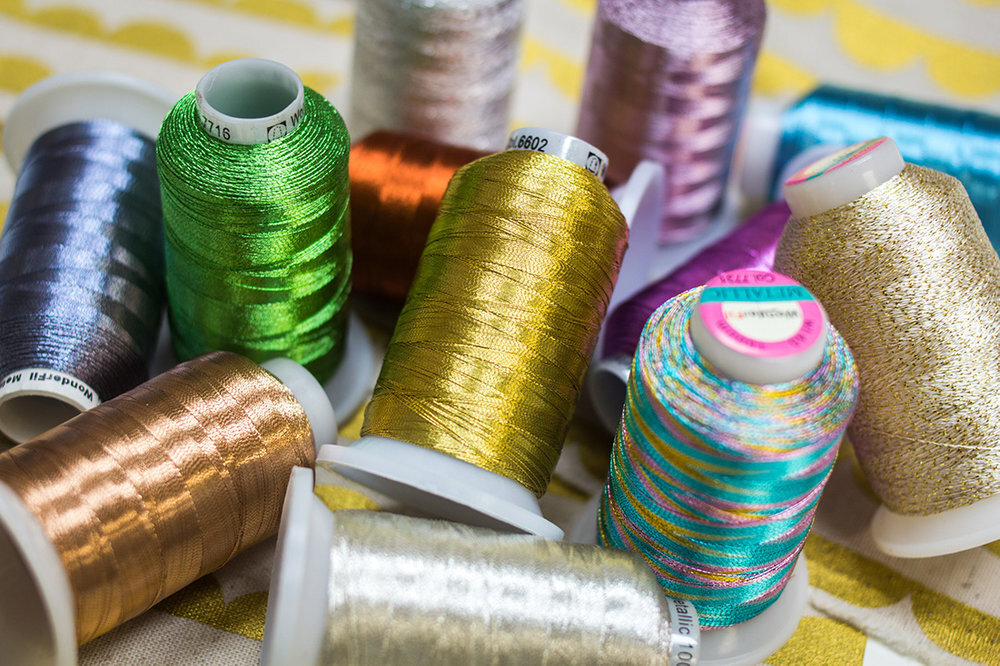Introducing Razzle™ & Dazzle™: 8wt Rayon & Rayon + Metallic Threads
Maura Kang
These juicy 8wt threads know how to show off boldly. Razzle™ 100% rayon and Dazzle™ rayon with metallic threads can be used for a variety of hand techniques, in serger loopers, and even in domestic sewing machines with specific techniques. They can add a totally new dimension to your projects that can’t be achieved with any other kind of thread. Let’s take a closer look at what makes Razzle™ and Dazzle™ threads so unique.
Razzle is an 8wt 100% rayon thread with a gorgeous and soft lustre, while Dazzle is an 8wt rayon with one strand of metallic running through it for when you just need a wink of sparkle.
When you think 8wt threads, one of the first uses that comes to mind is hand embroidery. Razzle and Dazzle are popular choices because unlike other 8wt rayon threads on the market, they have a tight twist that resists unravelling, making it ideal for pulling it through all kinds of fibres and fabrics. You can stitch confidently for beautiful and perfect hand embroidered embellishments.
Consider Razzle and Dazzle for other hand techniques like sashiko, big stitch hand quilting, visible mending, crochet, crafts, and tassels.
But these threads aren’t just limited to hand sewing. You can use these threads on the upper and lower loopers of your serger to create fantastic decorative edging on any project. Because these threads are made with rayon, they’ll leave a soft, silky, and shiny edging that is perfect for quickly finishing small quilts, panels, clothing, or any piece you want. We even made a tutorial to show you how to set up your serger and do this for yourself, which you can check out by clicking here.
While 8wt threads are too large to fit through the eye of your machine needle, that doesn’t mean you can’t use them on your sewing machine. Razzle and Dazzle make for an incredible couching thread that stands out from the fabric to create a gorgeous, touchable surface texture. You can also wind them on your bobbin to do bobbin work, which is a technique where you sew upside down to get away with sewing with these heavy 8wt threads in your machine. These techniques are perfect for adding that little extra bling and texture to any project.
Razzle comes in 46 solid colors in the WonderFil line, and 54 solid and variegated colors in the Sue Spargo collection. And Dazzle is offered in 34 colors in the WonderFil line, 36 colors in the Sue Spargo collection, and 35 unique twisted colors in the Starry Night Hollow collection by Kim Rado. These gorgeous threads are enough for anyone to fall in love with.
Inspired to sew with Razzle and Dazzle? Shop the Sue Spargo collection at www.suespargo.com, or find all of these colors in one of your local stores at www.shopwonderfil.com/shop-local.
































